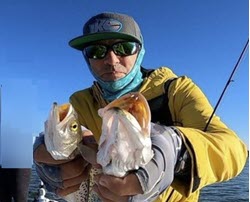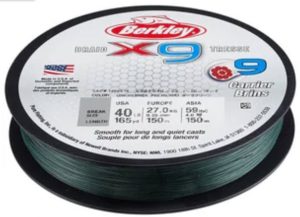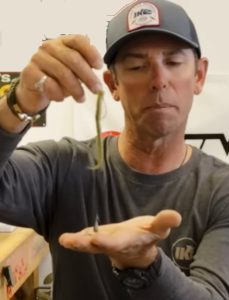
The dropshot is without a doubt one of the hottest finesse techniques. I don’t care whether you’re fishing in shallow, dirty water or deep, crystal-clear water, there’s a time when it can outproduce just about anything else.
Why is it so good? Well, it presents the bait off the bottom and keeps it horizontal. There are not many other presentations that accomplish that. It’s a very natural representation of a baitfish.

To use it to its maximum effectiveness, though, you need to choose the right leader length. It’s a critical part of making it work. You need to know when to go very short, when to go very long, and when an in-between length is the right choice.
For the sake of argument, let’s say that 10 to 12 inches is average. In that case, “short” is perhaps 4 to 6 inches, possibly going all the way down to 2 inches. Long would be anything over 12 inches, possibly as long as 20 or 24 inches.

The best way to make your choice is to consider the conditions. Start with water clarity. The general rule is that the more stained the water, the shorter the leader. You want the bait close to the weight, which is clicking and kicking up silt. In really dirty, super-stained, muddy brown water, I want the shortest leader possible.
Jump ahead to the opposite extreme, to ultra-clear water. I’ve fished places where I can read the date on a penny in 20 feet of water. In those situations, you want to get the bait as far away from the weight as possible.
In more standard, lightly-stained conditions, you want the distance to be not too far, not too close. Ten to 12 inches is usually on the money.
The second factor to consider is the cover you’re fishing around. Cover, you might recall, consists of physical objects on the bottom of the lake or river. It could be little rocks, boulders, grass or wood. When it’s short and low, like gravel or new growth grass, you typically want to keep your leader close to the bottom. For bigger cover, like boulders and milfoil that grows 2 to 3 feet off the bottom, or cane piles, you’ll want a longer leader. You want to keep your bait above the cover to ensure that it does not get lost. For a lot of the mid-range cover we fish, like regular rocks and cut-off stumps, a standard 10 to 12 inch leader makes the most sense.

Water temperature will also play a role in your leader length decision. One of the great things about a dropshot is that it can be a valuable tool year-round. I’ve caught fish on it in the winter when the water temps were in the high 30s, and I’ve used it at the opposite end of the spectrum, in boiling heat where the mercury went past 90. The basic rule here is that the colder the weather, when the fish tend to be more lethargic and bottom-related, I go short. In the heat of the summer, when they tend to be suspended more often, I go longer. In the in-between conditions that prevail in spring, early summer, and again in the fall, choose something right in the middle.
One final note: If you suspect that the fish are spawning, whether you’re looking at them or fan casting in likely areas, a short leader really excels. You want to aggravate them into striking at a time when they may not be focused on feeding.
There’s no perfect science to this, but by considering the various conditions you can make a very educated guess. Keep a dropshot rigged up throughout the year but be willing to change things up – not just your leader length, but also your bait and your weight – and you’ll become a finesse expert in no time.
_____________________________

______________________
Like Ike on Facebook, and follow him on Instagram and TikTok for fishing and fun content.
Subscribe to Mike’s YouTube channel, to ensure you see every adventure video. (Download the YouTube app on your phone and the videos will come to you automatically.)
Return to Mike Iaconelli’s website